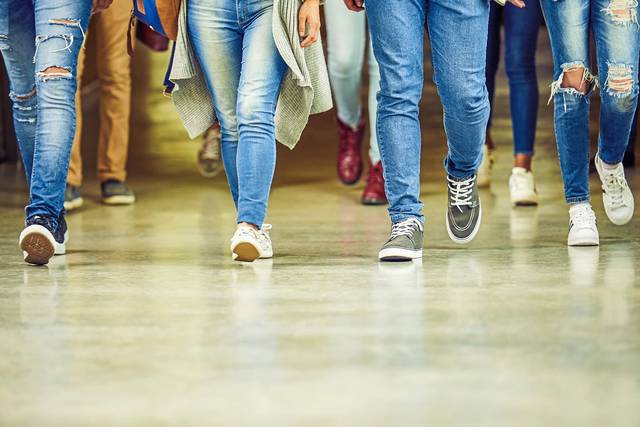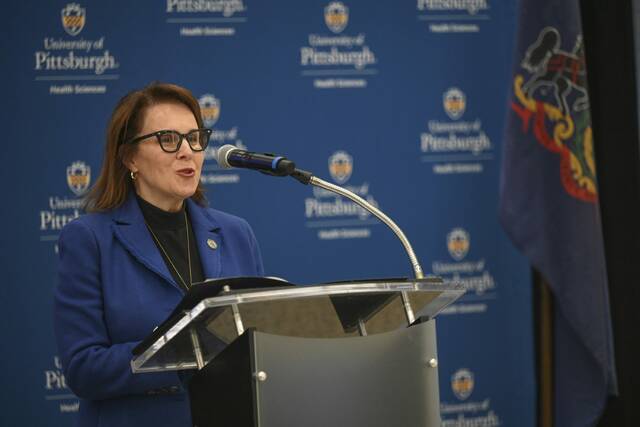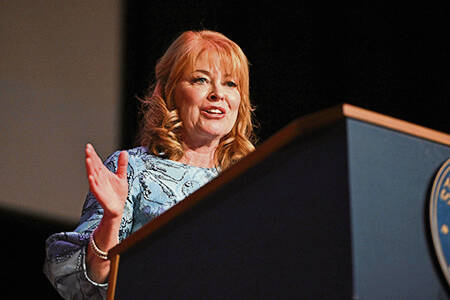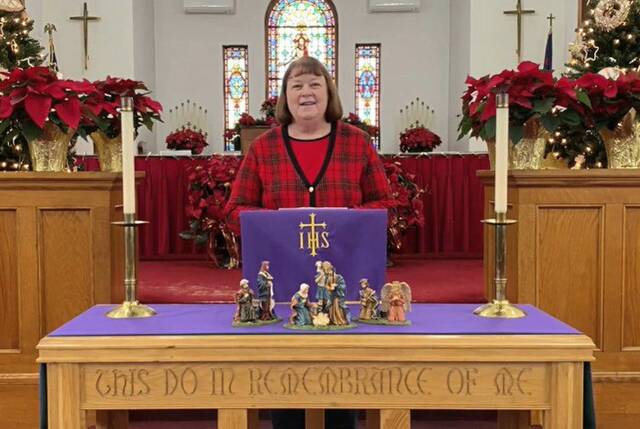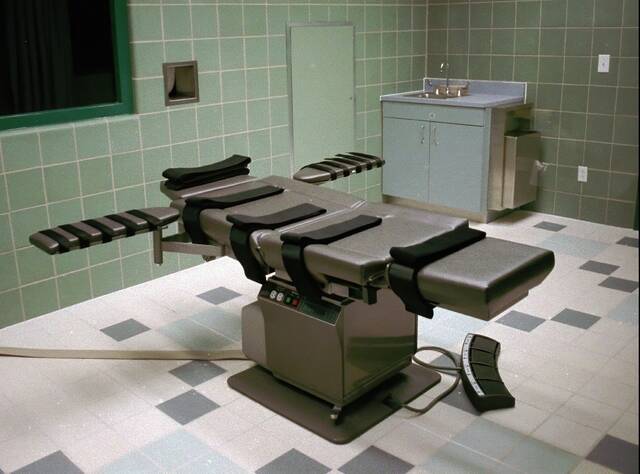News of updated student social distancing guidelines was met with enthusiasm Friday at Burrell School District, where Superintendent Shannon Wagner said about 70% of students have chosen in-person learning throughout the school year.
The Centers for Disease Control and Prevention guidelines will allow schools to relax social distancing measures in classrooms. The updated recommendations suggest students should sit at least 3 feet apart in classrooms, half as far as previous recommendations.
With that many students in the classroom, students couldn’t always maintain 6 feet of distance between their desks, Wagner said. Prior guidance had urged districts to maintain 6 feet of distance to the greatest extent feasible — but sometimes, it simply wasn’t possible.
“We’ve done our best,” Wagner said, explaining that they’ve modified schedules to limit the number of students in each room. “It still didn’t allow for 6 feet in every room.”
There was a similar sentiment at Greensburg Salem School District, where students have been gradually returning to longer weeks in school. All students are slated to be back by April 1, said Superintendent Gary Peiffer.
“Some of the rooms are smaller than others,” he said. “We were doing our best to maintain that 6 feet distance, but it wouldn’t have been possible in all classes.”
Students at Deer Lakes School District have been back in the classroom five days a week for a few weeks — and they were already sitting closer than 6 feet apart, said district spokesman Shawn Annarelli.
The new guidelines won’t change anything in the way the district operates, he said. Some classrooms were abiding by the 6-foot marker, he said. Others had desks spaced closer to 3 feet apart already.
“Hopefully that means more folks are more comfortable inside our building,” Annarelli said. “I would think that, if you’re not comfortable already, you might feel a little more comfortable now. Everybody will continue to do their best to physically distance as much as possible.”
At New Kensington-Arnold School District, Superintendent Jon Banko said he had just announced that students would be able to return to the classroom four days a week after Easter.
Officials made that decision before learning of the CDC’s updated guidance on social distancing, he said. They had weighed considerations like decreasing covid-19 case counts in the area, vaccine availability for teachers and the fact that warmer temperatures would allow them to open windows for better airflow in classrooms.
But the relaxation of social distancing requirements in classrooms will also help, he said.
“I think that will give everyone a sense of ease that they’re using some research that suggests 6 feet isn’t as necessary as we might’ve thought that was,” he said, noting that maintaining a full 6 feet in all circumstances simply wasn’t feasible.
But, he said, they will still try.
“We’re still going to make the effort,” he said. “We’re going to try to keep everybody spread out as much as we can.”
Banko said that many parents seem eager for students to return to school.
At Woodland Hills, the change didn’t mean very much. Superintendent James Harris said the school, which will be using a hybrid model, has space for 6 feet of distance in most classrooms. He said only about a third of students will be in a building at once, giving them enough room to continue using the 6-foot recommendation.
“We’re still following the same model,” he said. “We’re going to follow the most conservative approach.”
Harris said it is helpful to know that, if there are circumstances when 6 feet of distance is impossible, they can move students closer.
“If we have to go to 3 feet in some instances, it’s great that they’re allowing it,” he said.
But 6 feet of physical distance will remain his goal.
At Burrell, the new guidelines will hopefully allow students in science classes to return to in-person labs — something previously impossible due to small lab sizes, Wagner said.
The district tallied 13 covid cases in the first semester. Wagner cited that figure as proof that students can be in the classroom with less than 6 feet separating them without spurring a major outbreak.
“I think that the people who are concerned are concerned whether it’s 3 feet or 6 feet, so I don’t think it’s going to make an impact on what our parents choose,” Wagner said.
Dr. Amesh Adalja — a Pittsburgh-based infectious disease expert and senior scholar at the Johns Hopkins Center for Health Security — said students should feel safe sitting 3 feet apart.
“It is a safe distance,” he said. “This is a data-driven decision.”
Adalja said the new CDC guidelines — combined with data demonstrating that schools are safe — should encourage more schools to bring their students back to the classroom. He also noted that the new recommendation is in line with recommendations from the World Health Organization.. The WHO suggests social distancing of 1 meter, which is just over 3 feet.
“I think this really should be something that pushes school boards and policy makers to encourage and to persuade all the school districts that have not returned to in-person learning to start in-person learning,” he said. “This should remove some concerns some places had about capacity in classrooms. This is just another piece of evidence that shows how wrong we’ve been to have schools closed for this long.”


